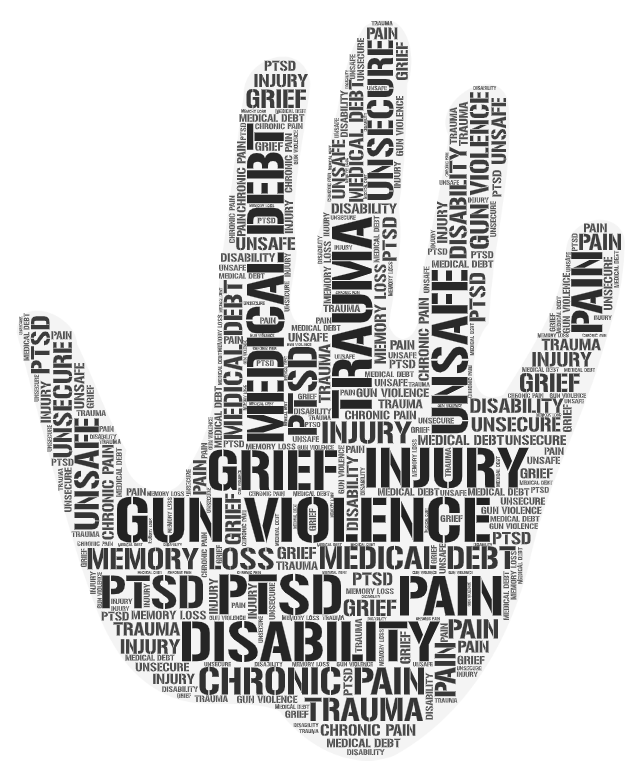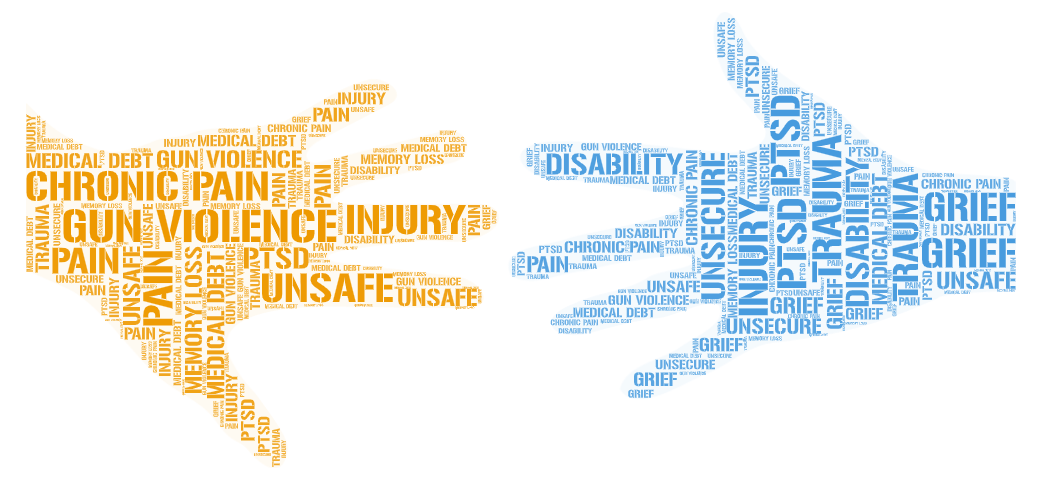by Shalinie Dowlatram

According to the CDC, over 40,000 people die from gunshot wounds annually (2022). A study from JAMA estimated an average 85,000 people suffer from gunshot wounds annually, based on data from 2009 to 2017 (Kaufman EJ et al, 2020). Gunshot wounds can leave people with lifelong disabilities, chronic pain, trauma, and other physical and mental health issues. Gun violence extracts a large burden on individuals, families, and communities. Family members of gun violence victims are more likely to suffer from mental health struggles when compared to people who are indirectly impacted by gun violence through the loss or injury of a loved one (Miller, 2022). Gun violence can occur in several ways including suicide, mass shootings, gang violence, and homicides (Lopez, 2017). It is clear that gun violence is a public health issue, yet we unfortunately lack evidence-based public health interventions to help reduce gun violence nationwide. The CDC’s primary role in gun violence prevention is data collection, research, and interprofessional collaboration. Our current lack of evidence-based public health interventions is a result of the Dickey Amendment passing in 1996 in Congress.
What is the Dickey Amendment
The CDC began researching violence prevention in the 1990s and they wanted to address gun violence as a public health problem. In 1993, the study “Gun ownership as a risk factor for homicide in the home,” authored by A. Kellermann et al was published, and it found that keeping a gun in the home greatly increased the risk of death from a firearm. The NRA felt this study was a threat to the rights of gun owners, and they turned to their “pointman” Jay Dickey for help (Dawson, 2022). Congressman Jay Dickey of Arkansas authored the Dickey Amendment, which states, “none of the funds made available for injury prevention and control at the Centers for Disease Control and Prevention (CDC) may be used to advocate or promote gun control.” The Dickey Amendment is a part of Congress’ spending bill. While this provision in Congress’ spending bill did not explicitly state that the CDC may not conduct gun violence research, it essentially halted gun violence research at the CDC for 20 years. Researchers were uncertain of the consequences of studying violence under the Dickey Amendment and some were worried it might end their career (Dawson, 2022). In 2018, after the mass school shooting in Parkland, FL, Congress added that the CDC has the authority to conduct research on gun violence to the Dickey Amendment after passing their spending bill (Rostron, 2018). Millions of dollars have been allocated to the CDC to study gun violence.
Consequences of the Dickey Amendment
Congressman Jay Dickey who advocated for the Dickey Amendment later changed his position on restricting funds for gun violence research. It had become apparent that we needed to understand the science behind gun violence to solve the gun violence problem. The Dickey Amendment was also applied to the NIH’s funding in 2011, further restricting federally funded gun violence research (Rostron, 2018). Ultimately, the main consequence of not studying gun violence and not focusing on developing evidence-based public health interventions has been a loss of progress and the ability to reduce the number of annual gun deaths and injuries. Gun violence victims and their families bear the full weight of the consequences of the 20-year research hiatus with their losses, wounds, disabilities, and their chronic pain, grief, and mental health issues.

References
Centers for Disease Control and Prevention. (2022, May 4). Fast facts: Firearm violence prevention |violence prevention | injury Center| CDC. Centers for Disease Control and Prevention. Retrieved August 28, 2022, from https://www.cdc.gov/violenceprevention/firearms/fastfact.html
Dawson, B. (2022). He Was the N.R.A.’s ‘Pointman.’ An Unlikely Friendship Made Him Think Twice. YouTube. NYT Opinion. Retrieved September 3, 2022, from https://www.youtube.com/watch?v=mX80JIl6vFs.
Kaufman EJ, Wiebe DJ, Xiong RA, Morrison CN, Seamon MJ, Delgado MK. Epidemiologic Trends in Fatal and Nonfatal Firearm Injuries in the US, 2009-2017. JAMA Intern Med. 2021;181(2):237–244. Retrieved September 1, 2022, from doi:10.1001/jamainternmed.2020.6696
Lopez, G. (2017, October 2). America’s unique gun violence problem, explained in 16 maps and charts. Vox. Retrieved September 3, 2022, from https://www.vox.com/policy-and-politics/2017/10/2/16399418/america-mass-shooting-gun-violence-statistics-charts
Miller, J. (2022, April 4). The hidden cost of firearm injuries. Harvard Medical School. Retrieved September 3, 2022, from https://hms.harvard.edu/news/hidden-cost-firearm-injuries
Rostron A. The Dickey Amendment on Federal Funding for Research on Gun Violence: A Legal Dissection. Am J Public Health. 2018 Jul;108(7):865-867. Retrieved August 25 from doi: 10.2105/AJPH.2018.304450. PMID: 29874513; PMCID: PMC5993413.
